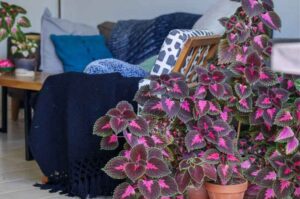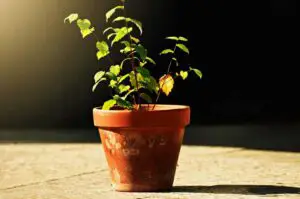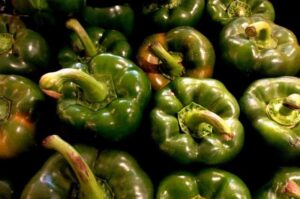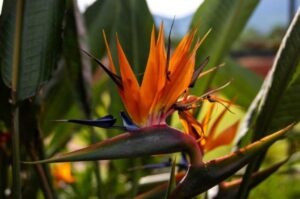Why Is My Staghorn Fern Shield Frond Turning Brown?
Do you own a Staghorn fern? If yes, you must know how tricky of a plant it is. For those thinking of purchasing one, this article is for you!
Staghorn fern or Platycerium bifurcatum, if you look at it, you’ll get confused if it’s a plant or an artwork. However, having leaves like the antlers of deer, it is widely used for decorative purposes. It is used in pots as well as mounted on walls. This strategic mounting gives the house an earthy look, and the wall looks aesthetically pleasing.
Its leaves are known by a different name- frond. In addition, there are antlers and shield fronds in these ferns, each owning a different function.

Imagine how a browning or dying Staghorn fern looks perched on the wall. But do not worry. This article will talk about why your Staghorn fern shield frond turns brown and how you can save it.
Underwatering and overwatering are the two most important reasons for which your Staghorn Fern Shield Frond is turning brown. However, this doesn’t mean your plant is dead, but it means the shield fronds have stopped photosynthesizing. And your Staghorn fern has entered the dormant phase.
Removing these brown shield fronds is a big no! However, they are not dead and help your plant clench to its host, apart from protecting plant roots and taking up nutrients and water.
Why is my shield frond turning brown?
When you bring a new Staghorn fern home, it’s all green. But with time, the shield fronds start turning brown. This is the point where all the new gardeners start fretting. They think their plant is dying, but it’s not the case.
This is a completely natural phenomenon and has nothing to do with your plant dying. Instead, it is entering a dormant/inactive phase and will probably stop growing till the springtime arrives.
Should you remove these brown Shield Fronds
No, you should not remove these brown fronds. Doing so will interfere with plants’ life cycle, which may surely lead to plants’ death.
If you try to remove a shield frond, you’ll find that below its dry-looking exterior part, from inside, it’s still alive and fleshy. That’s why it’s not recommended to remove the shield frond.
Functions of brown shield frond
Here are a few functions of shield frond.
- In their natural habitat, these cup-shaped shields fronds assist this fern in clinging to the trees. It also helps to grab dead leaves and other debris. When these dead leaves and debris decompose, they become the source of minerals for fern plants, hence the name trash basket plant.
- Another function of shield fronds is that it helps protect new growth and keep them moist until they can grow their own modified roots.
Does your Staghorn fern have fuzzy brown spots?
It must be clear that Staghorn fern is a bit different and challenging to grow and requires quite different care from other plants.
Sometimes you may notice fuzzy brown spots on the fronds that may leave you worried. But these brown spots are completely normal parts of a fern’s life cycle.
However, an improperly watered fern may also develop these brown spots on its frond. Here are the different types of fronds and the brown spots they develop, and their meaning:
1. Fertile fronds
The reproduction of Staghorn ferns is quite different from other plants. They do not reproduce through seeds but through powdery spores. They send out thousands of spores in the air carried by winds.
These spores develop on the underside of fronds in the round, small and brown bumps called sporangia. These sporangia are formed alongside these fertile fronds. They are fuzzy to touch and look at, especially when open and releasing spores.
So don’t mistake them for any disease or infestation. They are completing their life cycle.
2. Thirsty fronds
As the name suggests, thirsty fronds develop fuzzy brown spots when the plant is inadequately watered.
If these brown spots start developing from the tip of the frond and progress downward through the entire frond, it means the plant is under-watered and has started drying out.
However, it’s completely normal for the older fronds to become brown and shed off to allow the growth of new fronds. But if more fronds start turning brown than the green fronds, it’s time to soak the root ball in water for 10-15 minutes. After that, the root will absorb water, and the fern will be lively again.
3. Sterile fronds
The plate-like field fronds are also called sterile fronds. Their function varies from that of fertile fond. They hold the fern to trees instead of producing spores.
As they become old with time, they initially develop fuzzy brown spots and later turn completely brown and scorched. New, green fronds then replace them as a part of ferns’ natural growth.
Again, don’t worry about these brown spots; they are just the beginning of the dropping of the new leaves to welcome the new ones.
4. Wet fronds
Now wet fronds are truly a matter of concern. Fuzzy brown spots turning black signify that your fern has developed a fungal infection, Rhizoctonia.
You should allow the fern to dry out between watering sessions in such cases. Additionally, removing the infected frond will also stop the spread of fungal infection to the entire plant.
Conclusion
Nowadays, interior design has changed its course. Earlier, people used to rely specifically on their walls to give their home a designer look, either by painting or putting wallpapers on it. But now the time has changed. People have innovative ideas to decorate their homes; they have started using plants as indoor decorative items.
Staghorn fern is one such plant that is widely used as a decorative plant. But the bad news is they are not low care plants, so you have to be very cautious about them.
Know about their life cycle, their watering routine, all about their fronds and their peculiar behavior. And if you ever notice anything that is not a part of their life cycles, such as pest infestation in Staghorn fern, dehydration, or unusual brown spots on their fronds, it’s time to act fast before your Staghorn fern dies.






